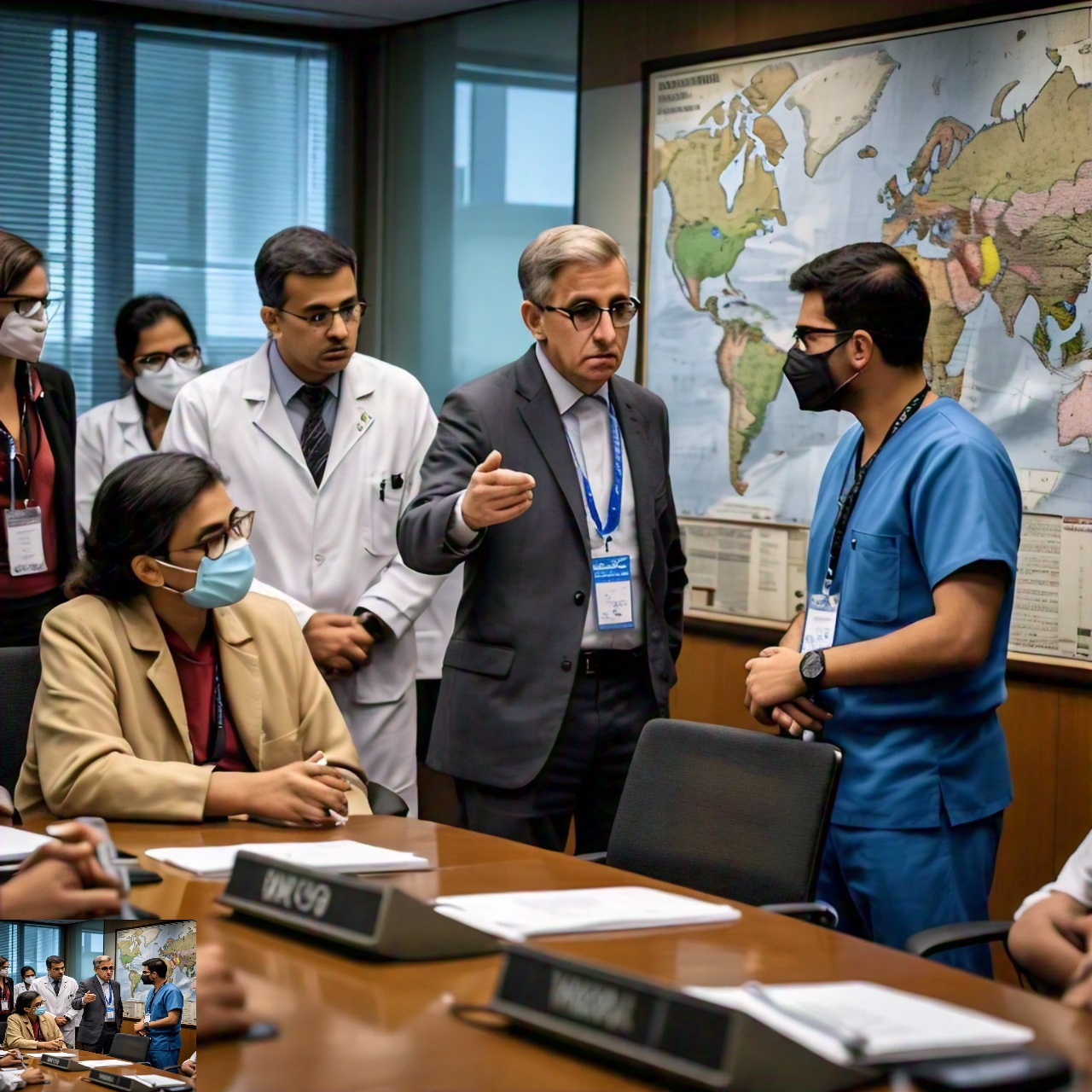WHO Warns of New Mpox Variant: Transmission and Prevention Strategies
The World Health Organization (WHO) has issued a warning about the rapid spread of a new Mpox variant. Unlike previous strains, this variant is highly transmissible through normal contact, raising concerns about its potential to cause widespread outbreaks. Understanding the nature of this new variant, how it spreads, and the measures we can take to prevent its transmission is crucial. In this blog post, we will delve into the latest information about the new Mpox variant, explore its transmission dynamics, and outline effective strategies to safeguard public health.
Understanding the New Mpox Variant
Characteristics of the New Variant
The new Mpox variant has several distinct characteristics that differentiate it from earlier strains. It exhibits higher transmissibility, meaning it can spread more easily from person to person. This increased transmission rate is partly due to mutations in the virus's genetic makeup, which enhance its ability to bind to human cells. Additionally, this variant may cause more severe symptoms compared to previous versions of Mpox.
Symptoms and Severity
Common symptoms of Mpox include fever, rash, and swollen lymph nodes. The new variant, however, appears to cause more intense symptoms and a higher rate of complications. Patients may experience more severe respiratory issues, prolonged fever, and extensive skin lesions. Early detection and medical intervention are critical in managing the symptoms and preventing severe outcomes.
Transmission Dynamics
Modes of Transmission
The new Mpox variant spreads primarily through close contact with infected individuals. This includes direct physical contact, respiratory droplets, and contact with contaminated surfaces. Unlike earlier strains, the new variant can be transmitted through normal, everyday interactions, such as shaking hands or touching common objects, making it more challenging to contain.
High-Risk Environments
Certain environments are particularly conducive to the spread of the new Mpox variant. Crowded places, such as public transportation, schools, and workplaces, pose a higher risk of transmission. Healthcare settings are also vulnerable due to the close proximity between patients and healthcare workers. It is essential to implement stringent infection control measures in these high-risk areas to mitigate the spread.
WHO's Recommendations and Warnings
Public Health Measures
The WHO has emphasized the importance of robust public health measures to control the spread of the new Mpox variant. This includes widespread testing, contact tracing, and isolation of infected individuals. Public awareness campaigns are crucial to educate people about the symptoms, transmission routes, and preventive measures.
Vaccination and Treatment
While there is no specific vaccine for the new Mpox variant, existing Mpox vaccines may provide some level of protection. The WHO recommends vaccinating high-risk populations, including healthcare workers and individuals in outbreak regions. Antiviral treatments are also being explored to manage the symptoms and reduce the severity of the disease.
Effective Prevention Strategies
Personal Hygiene Practices
Maintaining good personal hygiene is one of the most effective ways to prevent the spread of the new Mpox variant. Regular handwashing with soap and water, using hand sanitizers, and avoiding touching your face can significantly reduce the risk of infection. It is also advisable to disinfect commonly touched surfaces frequently.
Social Distancing and Mask Usage
Social distancing remains a critical measure in preventing the transmission of the new Mpox variant. Keeping a safe distance from others, especially in crowded places, can help minimize the risk of exposure. Wearing masks, particularly in indoor settings, can also provide an additional layer of protection by reducing the spread of respiratory droplets.
Community and Workplace Guidelines
Communities and workplaces should implement guidelines to prevent the spread of the new Mpox variant. This includes promoting remote work where possible, ensuring proper ventilation in indoor spaces, and conducting regular health screenings. Organizations should also provide resources and support for employees to follow hygiene and safety protocols.
Conclusion
The emergence of the new Mpox variant presents a significant public health challenge. Its high transmissibility through normal contact necessitates enhanced preventive measures to curb its spread. By understanding the nature of this variant, adhering to WHO's recommendations, and adopting effective prevention strategies, we can protect ourselves and our communities. Stay informed, stay vigilant, and prioritize health and safety in all aspects of daily life.
FAQs
1. How is the new Mpox variant different from previous strains?
The new Mpox variant is more transmissible and may cause more severe symptoms compared to earlier strains. Mutations in the virus enhance its ability to spread and bind to human cells.
2. What are the common symptoms of the new Mpox variant?
Symptoms include fever, rash, swollen lymph nodes, severe respiratory issues, prolonged fever, and extensive skin lesions.
3. How can I protect myself from the new Mpox variant?
Maintain good personal hygiene, practice social distancing, wear masks in crowded or indoor settings, and disinfect commonly touched surfaces regularly.
4. What should communities and workplaces do to prevent the spread of the new Mpox variant?
Implement guidelines such as promoting remote work, ensuring proper ventilation, conducting health screenings, and providing resources for hygiene and safety protocols.
5. Is there a vaccine for the new Mpox variant?
While no specific vaccine exists for the new variant, existing Mpox vaccines may offer some protection. The WHO recommends vaccinating high-risk populations.
Advertisement
Advertisement
Our website uses cookies to improve your experience. Learn more
Ok
